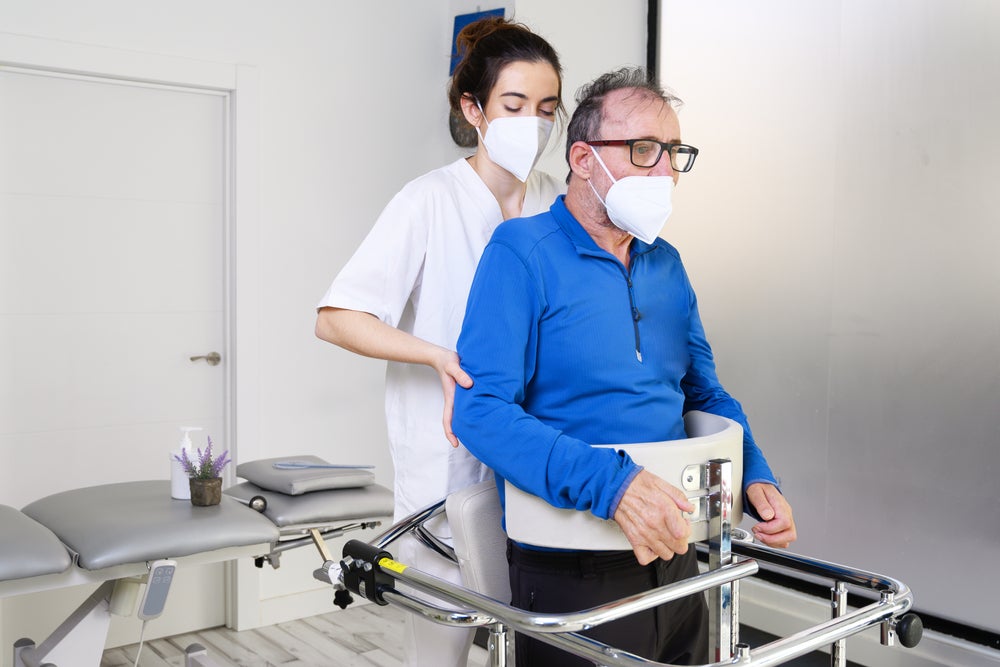
Need to Know:
GlobalData’s proprietary model uses a combination of machine learning and an algorithm to calculate an individual drug’s Phase Transition Success Rate (PTSR) and Likelihood of Approval (LoA). While LoA provides the probability of a drug ultimately receiving market authorisation, PTSR indicates the probability of a drug’s advancement to the next stage of clinical development. The model uses data points from the individual drugs, clinical trials, regulatory milestones, company, and financial databases.
Trial termination sinks Alexion’s Ultomiris approval chances in ALS
As of 20 August, Alexion, now acquired by AstraZeneca, saw its LoA for Ultomiris (ravulizumab long-acting) in ALS plummet by 19 points to 9% after its Phase III trial suspension.
The 382-patient Phase III study’s purpose was to evaluate the safety and efficacy of Ultomiris for the treatment of adults suffering with amyotrophic lateral sclerosis (ALS). The decision to terminate on lack of efficacy was based on a review of the trial’s interim data by the Independent Data Monitoring Committee (IDMC). The safety data was consistent with the drug’s established profile. The drug is already approved for treatment in adults with paroxysmal nocturnal hemoglobinuria (PNH) and more recently had its use expanded to include children (one month of age and older) and adolescents with PNH, as per a June 2021 company press release.
The terminated trial also resulted in a 27-point fall in the drug’s PTSR which dropped to 13%.
Trial resumption puts Vyriad’s Voyager-1 back in the oncology game
Vyriad’s Voyager-V1 saw its PTSR soar across oncology indications after an investigator-sponsored Phase I trial resumed recruitment following a trial suspension. The PTSR jumped 36 points to 63% in non-Hodgkin’s lymphoma, 35 points to 63% in myelodysplastic syndrome, and 35 points to 64% in anaplastic large cell lymphoma (ALCL). This score change occurred on 23 August after the trial was updated from “suspended” to “recruiting” on 19 August.
How well do you really know your competitors?
Access the most comprehensive Company Profiles on the market, powered by GlobalData. Save hours of research. Gain competitive edge.

Thank you!
Your download email will arrive shortly
Not ready to buy yet? Download a free sample
We are confident about the unique quality of our Company Profiles. However, we want you to make the most beneficial decision for your business, so we offer a free sample that you can download by submitting the below form
By GlobalDataA 242-patient Phase I safety and dose-finding trial of Rochester, Minnesota-based Vyriad’s recombinant vesicular stomatitis virus carrying the human NIS and IFN beta genes (VSV-hIFNbeta-sodium iodide symporter NIS) is being tested with or without Incyte’s Jakafi (ruxolitinib phosphate), according to ClinicalTrials.gov. For the study, Mayo Clinic is a sponsor and the National Cancer Institute is a collaborator. This slightly altered virus, known as VSV-hIFNbeta-NIS, could fight cancer cells without negatively affecting normal cells, particularly when used in combination with Jakafi. The Phase I trial was most recently listed as suspended between 8 July and 19 August, with “clinical hold VSV-IFN-NIS” stated as the reason on ClinicalTrials.gov.
The trial update also resulted in a boost to the drug’s LoA across indications. Voyager-V1’s LoA jumped by four points in non-Hodgkin’s lymphoma and ALCL, and by two points in myelodysplastic syndrome respectively.
Abridged Phase I study affects Takeda’s sickle cell disease plans
Takeda Pharmaceuticals’ SHP655 (adapamtasa alfa) for sickle cell disease (SCD) with vaso-occlusive crises saw its PTSR plummet 14 points to 41% after an ongoing Phase I/II trial was shortened to a Phase I. The PTSR score occurred on 24 August, a few days after a ClinicalTrials.gov update changed the design of an ongoing 56-patient Phase I/II study to a 20-patient Phase I study.
The Phase I is a safety and tolerability study, where patients with SCD are randomised to either intravenous SHP655 or placebo for 14 days, during which they receive standard of care, according to ClinicalTrials.gov. The 16 August update also changed the estimated primary completion date from 27 August 2021 to 2 November 2022. The study is currently recruiting out of 14 US-based sites, and Takeda’s private subsidiary—Dublin, Ireland-based Shire Pharmaceuticals—is listed as the study sponsor. The trial update also resulted in a six-point drop to the drug’s LoA, which fell to 16%.
Takeda has a market cap of 53.18bn.
Suzhou Kintor’s androgenic alopecia asset advances to next stage
As of 20 August, Suzhou Kintor saw its PTSR for its Phase I asset, pyrilutamide, in androgenic alopecia, jump by 10 points to 84%.
The jump in the drug’s PTSR was a result of several trial updates including the trial’s CRO, endpoint and sponsors. The trial’s indications have also been expanded to diabetic foot ulcers and acne vulgaris. Additionally, the Phase I trial had been completed on 11 August, noted by a 9 August update to ClinicalTrials.gov. Pyrilutamide is administered through topical use and acts by targeting and subsequently binding to androgen receptors.
Laboratorios Sophia’s pazufloxacin flunks trial in bacterial conjunctivitis
Laboratorios Sophia’s PRO-157 (pazufloxacin) saw its LoA for treating bacterial conjunctivitis plunge 26 points after its Phase III trial was terminated. The LoA change to 27% occurred on 25 August after the Phase III trial’s results were posted on ClinicalTrials.gov.
Guadalajara, Mexico-based Laboratorios Sophia’s Phase III study was intended to recruit 160 patients, though it only enrolled 46 before the trial was terminated, with “sponsor’s convenience” listed as the rationale on ClinicalTrials.gov. The non-inferiority trial compared PRO-157, an ophthalmic solution of pazufloxacin 0.6%, to Allergan’s Zymar, an ophthalmic solution of gatifloxacin 0.3%. Some results from the 46 patients assessed are available on ClinicalTrials.gov, though the site notes that a small sample size makes them “merely descriptive”. Bacterial conjunctivitis, often known as pink eye, is caused by an infection of the eye’s mucous membrane. The trial update also resulted in a 31-point drop to the drug’s PTSR, which fell to 32%.
For last week’s regulatory roundup, click here.



